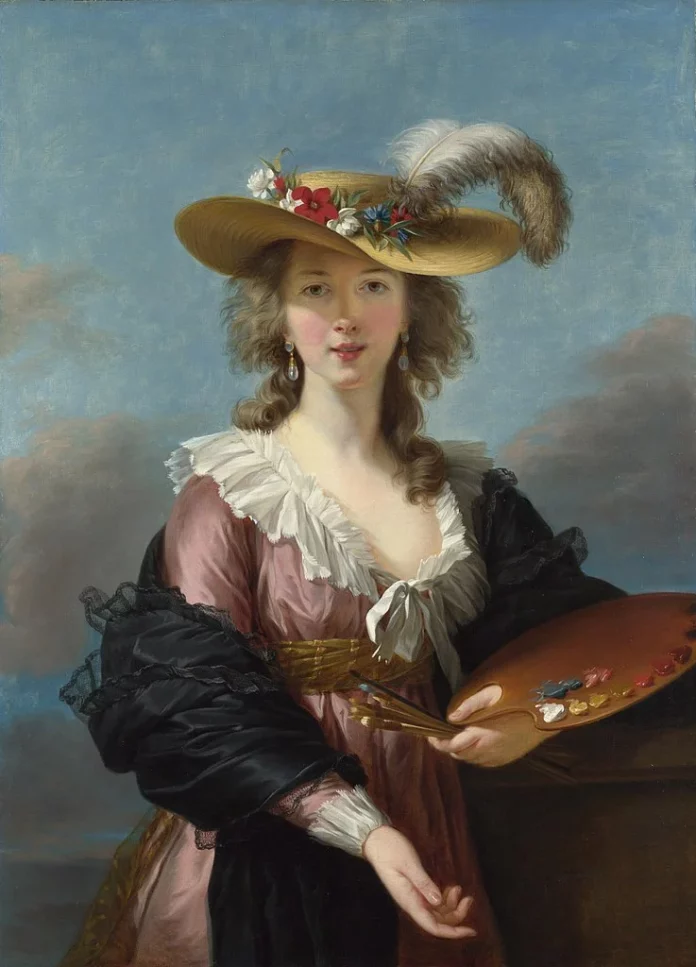The odds facing women artists in the 18th century were nearly insurmountable. The vast majority of women who were able to make a living in the arts learned their trade from their fathers, as did a young Elisabeth Vigée. Her father’s early death, however, and the inability for women to receive training as an apprentice or in the academy, meant that the artist was virtually self-taught. From such inauspicious beginnings, Vigée Le Brun developed into one of the leading artists in all of Europe, able to command higher prices for her portraits than any other artist of her time.
Vigée Le Brun’s fame was secured in 1778 when she was summoned to paint her first portrait of the young Queen Marie Antoinette. From that point, Vigée Le Brun was the queen’s favorite portraitist, creating 30 portraits over the next decade of the ruler who preferred fashion to royal protocol, often causing a scandal in the process. For example, on more than one occasion, the queen preferred a sense of autonomy in her portrayal as opposed to the lavish trappings of the French court, donning the simple attire of a peasant (or the queen’s notion of a peasant).
Elisabeth Louise Vigée Le Brun
The daughter of a French pastel portraitist, Elisabeth Louise Vigée was born in Paris in 1755. In her published memoirs, titled Souvenirs, she describes how she was attracted to drawing from a very early age, admitting, “I scrawled on everything at all seasons; my copy-books, and even those of my schoolmates had their margins crammed with tiny drawings of heads and profiles.” Her doting father, Louis Vigée, enthusiastically encouraged her nascent artistic efforts, allowing her free reign of his studio and materials.
Grace, elegance and a welcoming manner, these words might as easily describe the personalities portrayed in the portraits by Elisabeth Louise Vigée Le Brun, as the artist herself. Normally a tedious process, Vigée Le Brun’s reputation as a lively conversationalist, in addition to her demonstrably expert talent as a painter, were significant to a clientele that often dreaded the notion of having a portrait made. The active engagement between the artist and her subject is evident in the finished portrait, as her sitters appear both relaxed and animated. She quickly won over her most famous and loyal supporter, none other than the controversial Queen of France, Marie Antoinette. In her hands, we see Marie Antoinette take on the roles of queen, equestrian, fashionista, and mother – some portraits are scandalous while others follow royal protocol.
Madame Le Brun, as she was commonly known, was an embodiment of French aristocratic culture, which remained a key trait of her style and success in her period of self-imposed exile during the French Revolution. In all, the prodigious artist produced approximately 800 paintings with a long list of royal patrons actively seeking her flattering portrayals across Europe. Although the portraits of Vigée Le Brun might look traditional to contemporary viewers, she was not shy in breaking established norms in the genre. For example, the welcoming gestures and slightly open-mouthed smile, as if in greeting, found in many of her portraits caused quite a stir when debuted. What first caused scandal, however, soon became style, as the pleasing naturalism and relaxed manner of Vigée Le Brun’s portraits became immensely popular among the elite and trademark of the artist’s distinctive style.
Art by Elisabeth Louise Vigée Le Brun
Peace Bringing Back Abundance (1780)
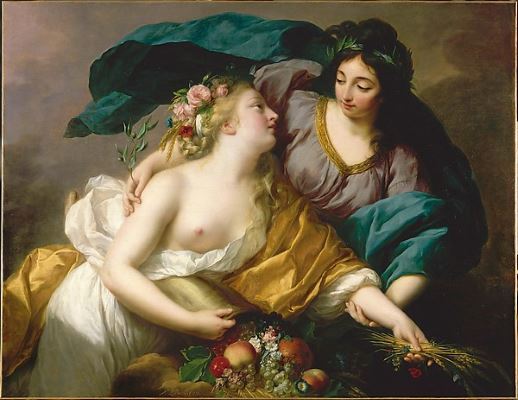
Self Portrait in a Straw Hat (1782)
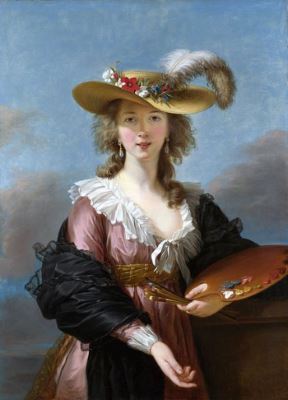
Marie-Antoinette with a Rose (1783)
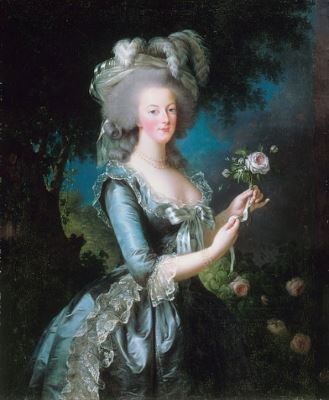
Marie Antoinette and Her Children (1785)

Self Portrait with Daughter (1789)
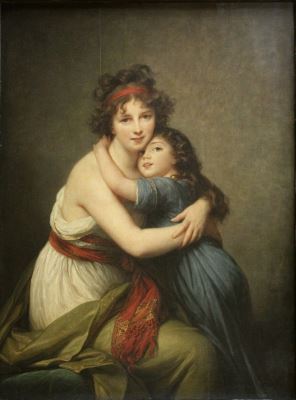
There are no trademark signs of her professional status as an artist in this image, instead Vigée Le Brun simply paints herself with her daughter Julie. The two are set against a bare, softly illuminated background and clasp each other in a warm embrace whilst looking towards the viewer. They are not clothed in fashion that would have actually been worn during this period, but dressed in a manner that evokes the ancient past. This represents the rising influence of the Neoclassical style on artists working in France.
The use of Neoclassical clothing is a marked difference from Vigée Le Brun’s earlier portraits of this type. Although it might be seen as a fashionable affectation, it could also be interpreted as lending the gravity of the classical to motherhood and female relationships, where it was usually only reserved for masculine fraternity and civil values, particularly in the paintings of Jacques-Louis David.
Oil on canvas – Musée du Louvre, Paris
The Rococo style was in decline by the time of Elisabeth Vigée Le Brun’s introduction to the French royal court. In her able hands, however, she deftly combined the grace and elegance of this earlier style with the composure and decorum of the nascent trend of Neoclassicism. Although she would never adopt the hard, linear style associated with the high Neoclassical tradition, most notably in the history paintings of her contemporary, Jacques-Louis David, she found ways to integrate notions of the past, such as in adopting the attire of antiquity, into her portraiture.
French culture was widely influential in Europe during the 18th century. Whereas her royalist position would put Vigée Le Brun’s life in danger in revolutionary France, it was an asset to the artist abroad. Her highly sought-after style of portraiture represented the height of aristocratic French culture to patrons in Italy, Austria and, perhaps above all, the Russian court of Catharine the Great dramatically increasing the prestige of the artist.


